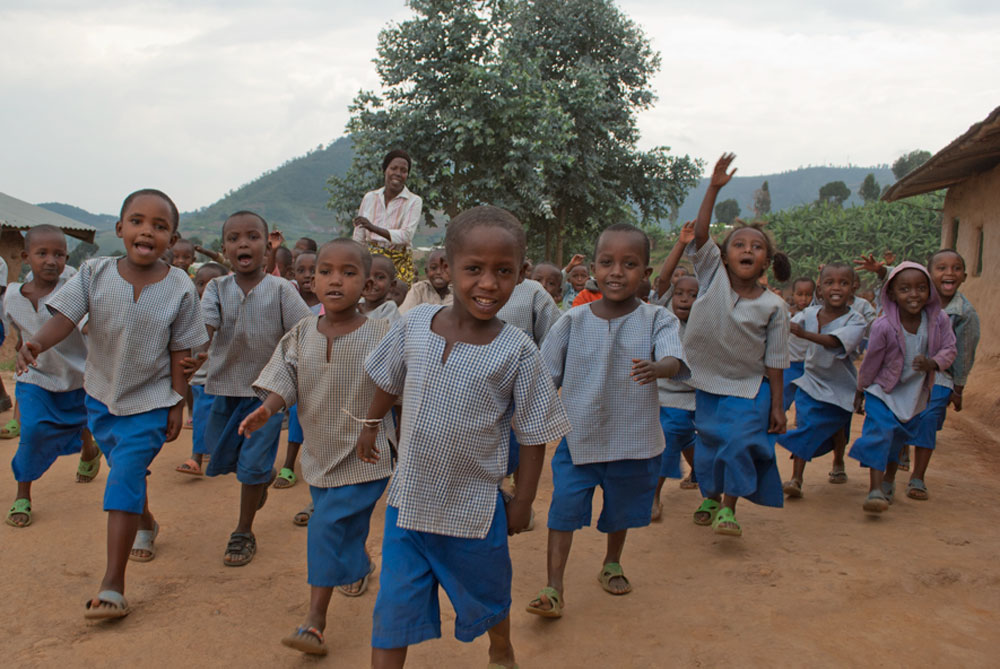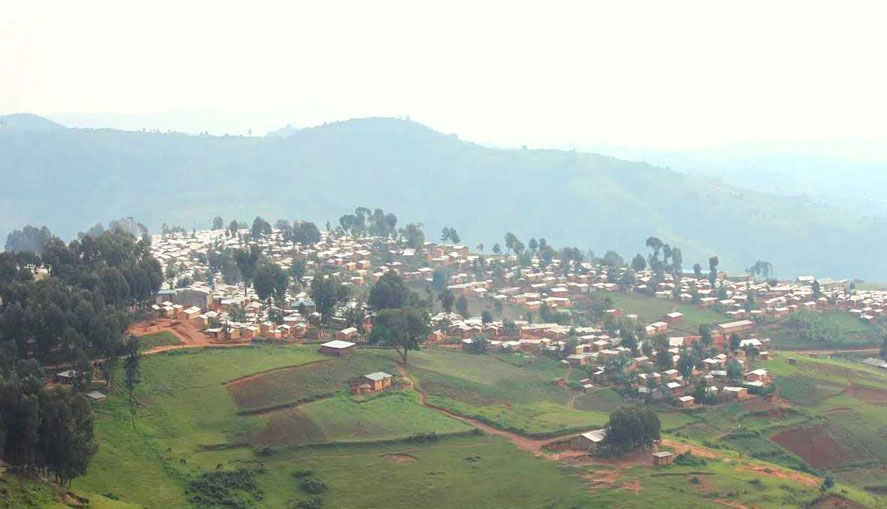
Kiziba refugee camp. Rwanda provides education for the refugee children
Inside the Kiziba refugee camp for Congolese refugees located in rural Karongi district – western Rwanda, a mother sits on the veranda of her mud house. She has 3 young babies all jumping over her – each seeking attention.
At first encounter you get the impression some of the children came from the neighbours. The mother says she is 27, but looks more than 40. Actually, she has 6 children.
This particular home is just one among hundreds of others in the same camp, home to more than 17,000 refugees.
Kiziba camp is one of three in the country housing Congolese refugees that have streamed into Rwanda since 1996. Kiziba has existed since then and has permanent houses with established neighbourhoods.
The government, UN and aid agencies have kept the Kiziba population at the same rate. Relocating the excess to other places. Thousands have been relocated to north America under a special program.
In March 2010, a Rwanda senate committee raised a red flag about the “alarming” birth rates in Kiziba camp. A committee had conducted a ground visit there.
The senators said in their report that the refugees were having too many babies because the UN World Food Programme (WFP) provides food rations depending on the tnumber of people in the home.
“When we talked to the refugees they told us that the bigger the family the more food relief they get, and that that’s why they have to give birth to as many children as possible,” read the report to the senate sitting, according to The New Times story of April 5, 2010.
Violent protests erupt
The senators demanded that the government acts urgently to control the birth rate in the camps before it was too late.
Years after, Kiziba camp is back in the news again since last week for all the wrong reasons.
Carrying the babies, placards and cellphones to record their protest – indication the act had been well planned, the refugees marched to the Karongi office of the UN refugees agency UNHCR. They chanted their demand: give us more food or let us go back to Congo even if there is war.
At the UNHCR office, when they did not get the answers they wanted, the protesters turned on local businesses. They shouted and blocked traffic – causing paralysis in the small town.
The police who had been just watching, moved in to stop any more disruptions. Running battles resulted in the death of five protesters and more than two dozens injured.
So what is behind the sudden breakdown of order among the Congolese?
Until November 2017, the WFP provided 16.95 kilograms of food to each refugee each month, mainly maize, beans, vegetable oil and salt, according to the agency.
Under the recently introduced ‘cash not food’ program, some other refugees had been receiving 7,600 Rwandan Francs (US$9) to buy food in local markets.
However, the agency announced on January 11, 2018 that it was facing a funding shortfall. As a result, it would “trim assistance”. The funding situation is now so bad it reduced the ration sizes even further – to 75 percent.
Some 130,000 Burundian and Congolese refugees in camps in Rwanda rely on humanitarian assistance to meet their food needs. But there are thousands others who do not live in camps.
Back at the Kiziba camp, the refugees that are protesting say they are starving due to the reduction in amount of food rations.
For years, they lived on abundance, and could not handle the shock of having to survive on less.
40 babies every month
In the 2010 senate probe, it emerged the refugees avoided birth control programs to get as many babies as possible.
Aid agencies at the time also reported similar concerns.
“On average, about 40 babies are born in Kiziba camp every month, this is a big number,” said Dr Morgetta Tenna of African Humanitarian Action, which operated in Kiziba camp.
“The quantity of food supplied to a family in a refugee camp is based on the size of the family and this is why they tend to give birth to many children so as to get more food.”
The high birth rate among refugees was also attributed to high drop out from school among girls. Education is provided inside the camps, but they have to move to other schools outside.
“If they have two children, they’ll get little: maybe two kilos,” said Chantal Numukobwa, a family planning councilor in Kigeme camp. “For those who have ten children, they might get twenty kilos.”
The Rwanda ministry of disaster management and refugees conducts regular visits, particularly to Kiziba. It has introduced countless family planning programs.
And the refugees themselves acknowledge they need to control how many babies they have. But their vocal leaders want something else from government.

An aerial view of Kiziba refugee camp in Karongi district, in Western province of Rwanda
During a visit to Kiziba in October last year, camp leaders gave a list of their needs to minister De Bonheur Jeanne d’Arc who was with UNHCR Representative to Rwanda, Ahmed Baba Fall.
“Our families have expanded, we need more houses,” said leader Bimenyima Patrick. “Due to high birth rate, the number of people has increased. We have a shortage of water. We need electricity and safe roads leading to our camp.”
The refugees also don’t want to get so attached to the world outside their camps. Some say they will wait for as long as it takes to go back to Congo – which is again back to war.

